PRODUCT
Medical Leeches
MEDICINALIS LEECHES
Product Information
- The high quality medical live leeches are organisms that have gone through the aseptic filtering process under strict quality control. These are living leeches to control venous congestion that might occur after microsurgery and a free flap.
- In Oriental medicine, leeches are used instead of acupuncture on the acupuncture points.
While sucking blood on the acupuncture points, the vasodilation elements and anticoagulant enzymes found in the salivary gland of the leech are injected through blood vessels to safely and effectively treat patients with hypertension, a stroke, and arthritis.
Application
- Treating venous congestion after microsurgery
- Treating venous congestion after getting a free flap
- For patients with hypertension and a stroke
- Treating rheumatoid arthritis and degenerative arthritis
- Effective for removing bruises or hematoma
Advantages
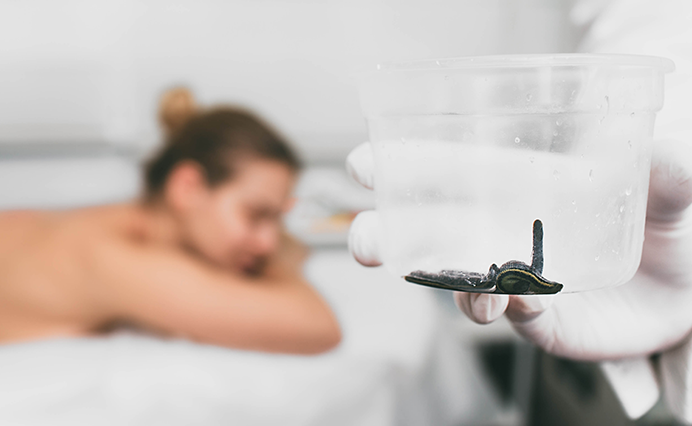
Treating venous insufficiency which is one of the causes of microsurgery and hand & digits replantation failure
Drainage without the temporary side effects of venous blood
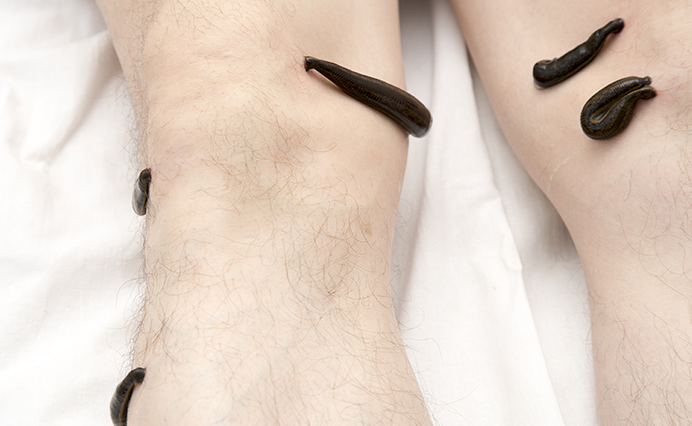

Drainage without the temporary side effects of venous blood
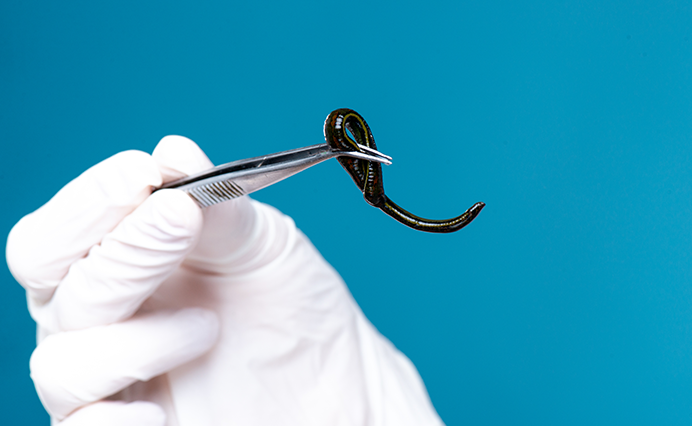
Almost no damage at the end of the resin and surgical site
Prevention of blood coagulation in the microvessel
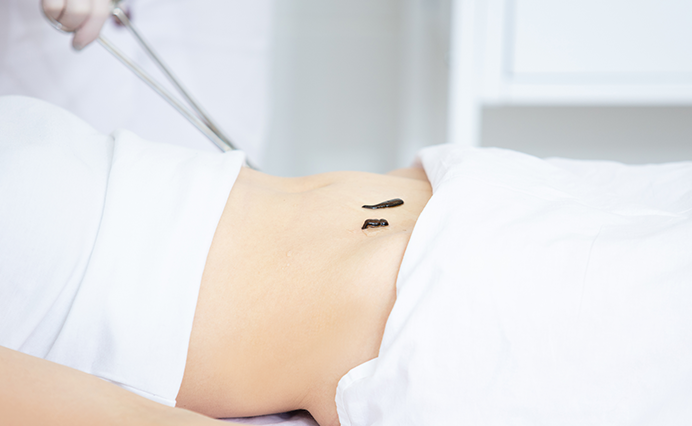

Prevention of blood coagulation in the microvessel
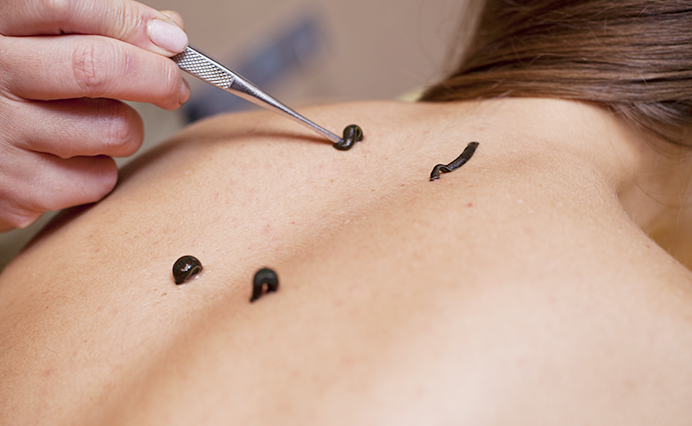
Prevention of excessive bleeding and the minimization of a blood transfusion
Prevention of the suspension of venous drainage
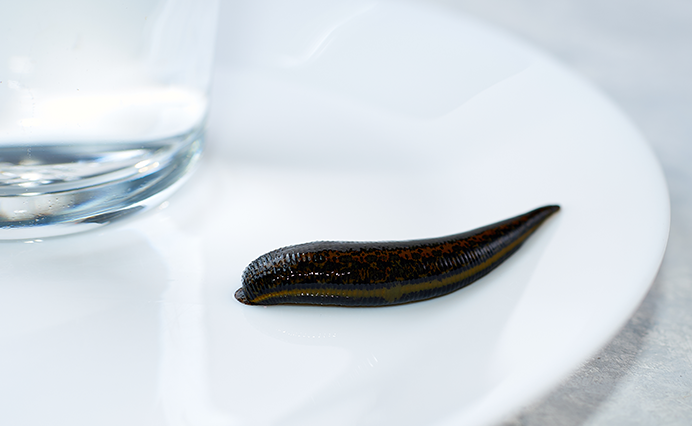

Prevention of the suspension of venous drainage
Therapy Method
For Dr. Leech treatment, the medical team must provide appropriate guidance and explanations in advance.
A patient might fear leeches in general. So, providing an explanation about the treatment examples and effects of other patients in advance would induce the patient’s cooperation and volition for the treatment.
Preparation and practice
Prepare a container to put leeches in.
Prepare a blood pressure gauge, lancets, disposable gloves, disposable bandage, cotton balls, plaster, gauze, etc.
By using a lancet, form blood at the area which will be bitten by medical leeches.
Use disposable gloves or tweezers to gently grab the 2/3 section of the leech and adhere the leech’s mouth on the diseased part.
Allow the leech to bite the area by repeating the process of removing and putting the leach back until it bites.
Once the leech starts sucking blood, wait for a while until it sucks a sufficient amount of blood. If placing a leech on a small area, prepare the leech one at a time.
If the leech sticks to a wrong area other than the diseased part before sucking blood, gently remove the sucker attached to your skin.
Also, if the leech has sucked some blood from the patient but fails to suck blood continuously, it is prohibited to reuse the same leech for another patient.
Make sure you don’t place any unused leeches back in the container.
In general, if a leech has sucked enough blood, it will naturally separate itself from the area, but it is possible to artificially remove the leech after 80 minutes.
This is because it has taken sufficient time for the smooth blood circulation and the suitable amount of a leech’s saliva, which is a pharmacological ingredient, has entered inside the body.
The important steps of leech therapy include not only attachment but also removal.
When you bring a cotton ball soaked with alcohol to the top of the leech’s mouth that sucks up blood (do not come into contact with the mouth), the leech will be removed from the area by turning its mouth.
If the leech spits out blood after being removed from the area, do not panic and simply grab the leech with tweezers to put it in the container. Do not stab the leech with the sharp part of tweezers or remove the leech forcefully or roughly.
After use, place the leech in a container filled with alcohol and handle in an area that is out of the patient’s sight.
As bleeding is likely to continue for up to 24~36 hours after removing the leech, prepare a thick layer of cotton balls on the area and attach the cotton pads over it in a proper size. Finish with a plaster.
A leech sucks up about 2~4mg of blood, and 15~30mg of bleeding would occur after removing it.
Actions to take after treatment
- Wound with bleeding
- A thick layer of the gauze or bandage must be prepared. Otherwise, it may fall due to a large amount of blood.
- If the patient bleeds a lot, change the bandage.
- If bleeding continues for a long time over 12 hours, use a compression bandage.
- It is recommended to avoid drinking, smoking, hot bath, sauna, and physical labor on the day of treatment.
- Leech handling after treatment
- Do not reuse the same leech.
- Additional treatment
- It is recommended to change the bandage after treatment.
- Replace with a new bandage on the next day.
- If any side effects are observed, immediately diagnose and treat. A second visit is required within 3~7 days.
Caution
- Basic rules
- Do not reuse the leech that has come in contact with a patient’s blood.
- Because a leech is a living organism, it may move to another area while bloodsucking. It is required to prepare a person in charge of watching over the action for leech therapy after surgery.
- In the uncommon cases of attaching a leech inside the patient’s mouth or to the tongue after surgery, make sure to keep an eye on it and stuff the mouth with a gauze to prevent any accidents such as the leech entering the throat.
- It is necessary to consider that a relatively larger amount of bleeding occurs in young patients compared to adult patients.
- Explanation for the patient about medical leech therapy
- A detailed explanation of the leech therapy process must be provided to the patient.
- It is required to explain any actions to be taken by the patient during the treatment process.
- The doctor must give explanations about the side effects that might occur from the leech therapy.
- The patient’s consent on leech therapy
- If possible, it is recommended to obtain the patient’s consent on a written document.
- Information to be announced to the patient
- When treating hands or toes with poor blood circulation, prepare a favorable condition by rubbing or using a warm steamed towel.
- It is recommended to avoid using any products with scents including body wash, soap, perfume, cosmetics, and others before treatment.
- A patient should wear comfortable clothes that do not tighten the body.
- If the area treated with a leech is itchy, it is due to histamine from the leech’s saliva that dilates blood vessels.
- It is important to carefully note if the patients display the tendency of abnormal bleeding.
- Because leech therapy always involves bleeding, it is safe to perform a blood test and measure blood pressure before treatment. Also, it is important to take into account that a relatively large amount of blood is consumed.
- Leech therapy for cases related to blood loss including anemia and bone marrow diseases must be consulted with the medical team.
- If the patient experiences blood coagulation, consult with the medical team first.
- When taking anticoagulants such as heparin, consult with the medical team first.
- If the patient experiences erosive gastritis or gastrointestinal bleeding, consult with the medical team first.
- If the patient suffers from an infectious disease, consult with the medical team first.
- If the patient has a severe organic disease or takes immunosuppressants, consult with the medical team first.
- If the patient is severely allergic to the antigen-antibody reaction against the protein secreted from the leech’s salivary gland, consult with the medical team first.
- If the wound recovery is slow locally or on the entire body, consult with the medical team first.
- Because keloids may form on the area with a leech bite, consult with the medical team first if the patient generally experiences keloids.
- Leech therapy for pregnant women must be consulted with the medical team.
The medical team must check the patient’s condition regarding each case, and the patient must be informed of all of the potential side effects in advance.
The notification of the information to the patient in advance may lessen any worries and inconvenience of the patient.
How to use

Dr. Leech Therapy has been introduced to diverse media many times over the past few years, and the treatment method and effects of the medical leeches have become familiar for the general public since it has been done in hospitals and oriental medical clinics as well. Since our establishment in 2011, Artmeditech has accumulated expertise and trust in Dr. Leech Therapy through exchanges with many different types of medical institutions across the nation including general hospitals, university hospitals, local hospitals, oriental medicine hospitals, oriental medicine clinics, along with health professionals.
In general, the purpose of Dr. Leech Therapy was to treat blocked or poor blood circulation due to injury or disease. As medical leeches were proved as medical devices by the U.S. FDA in 2004, the leech therapy that had been neglected behind aspirin, antibiotics, penicillin, and other modern medicine began receiving attention again and the related studies were actively carried out.
Nowadays, many people are becoming interested in promoting their health in addition to the existing wound treatment from Dr. Leech Therapy. To contribute to the popularization of Dr. Leech Therapy, Artmeditech has been studying more convenient and effective methods for Dr. Leech imports, storage, and shipping so that Dr. Leech has the best conditions to be used for Dr. Leech Therapy.
Take out a leech for treatment from the container.
Form blood on the diseased part with a needle or tip of the knife.
Bring the leech’s mouth close to the diseased part.
Once the leech bites the area, carefully remove the tweezers from the leech. (Never move the wound.)
Observe and wait until the leech is separated from the area after bloodsucking. (After a leech sucks up blood for 5~10 minutes, it is considered that it has finished its role. Once a leech is separated after biting, it does not bite again. So, a new leech should be used if necessary.)
Once the leech is separated from the wound, put it inside a container filled with alcohol to dispose of.
How to store
Refrigerate the leeches inside the container.
(Leeches go into hibernation at temperature 5℃ or lower.)
Take out the container 10 minutes before use at room temperature.
(Hibernating leeches cannot function properly if directly applied to the wound.)
Renew to cold purified water once a day. (Renew water after opening even when not using leeches.)
If you follow the steps properly, leeches will stay healthy for 2~3 days.
Caution
Be careful not to come in contact with any chemicals (foreign substances) since medical leeches will die instantly due to the slightest amount of chemicals (e.g. Tweezers that touched a wet tissue, forceps stained with alcohol, etc.).
Return or exchange of leeches is not possible after 24 hours of delivery.


